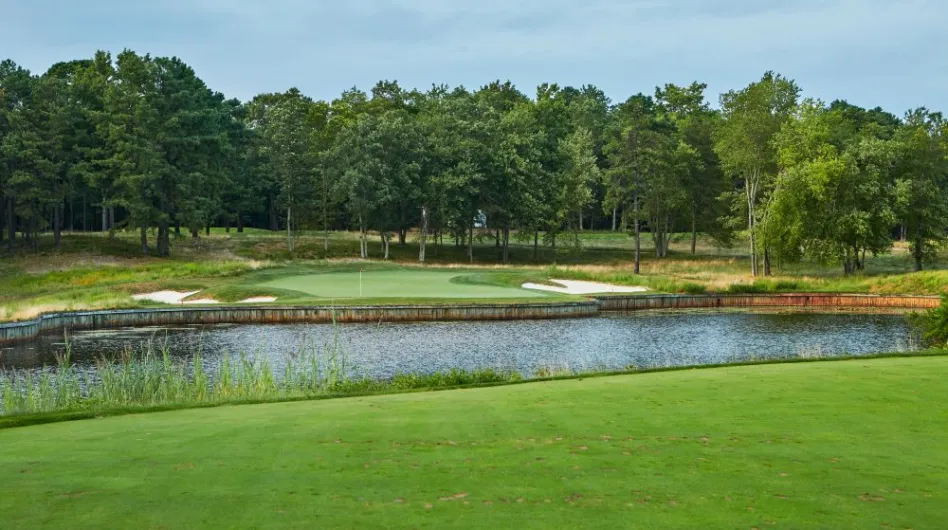Mastering the Game: Golf Rules Explained

Throughout the season, NJ Golf Rules Official Walter Sartorius shares his expertise on the Rules of Golf. The summer edition provides an explanation on relief options and permitted actions when a ball has come to rest in a penalty area.
One of the most frequently applied rule situations during NJ Golf competitions is taking penalty relief under Rule 17 (Penalty Areas). Penalty Areas are specific areas of the course that limit the players’ options, and except in rare situations, require the player to either play the ball as it lies or take penalty relief outside the penalty area.
While players are generally comfortable with the procedures for taking either yellow or red penalty area relief; players have been less certain about how to proceed when a ball is found in a penalty area and may be playable.
Some common (and some not so common) situations when a ball is found in the Penalty Area:
- Ball is found but may be unplayable: Unplayable ball relief can be taken anywhere on the course except in a Penalty Area. Players must play the ball as it lies or use one of the penalty area relief options.
- Ball embedded: Similar to unplayable. Embedded ball relief does not apply to a ball in a penalty area so either play ball as it lies or use one of the penalty area relief options. Also – since embedded ball relief is not available except in the General Area, the ball cannot be lifted just to see if it is embedded.
- Can the player move/remove loose impediments? Yes, but be careful not to accidentally move the ball (replace ball with a 1-stroke penalty).
- Can the player move/remove movable obstructions (often pieces of broken cement or flexible drain piping)? Yes, and it is permissible for someone else to hold the obstruction out of the way while making a stroke. If the ball is inadvertently moved when removing the movable obstruction, there is no penalty and the ball is replaced on its original spot.
- Is free relief available from an Immovable Obstruction? No, when the ball is at rest in a penalty area, free relief is not permitted from any abnormal course condition – including Immovable Obstructions such as bridges, fences or cart paths.
- Are practice swings or touching the ground permitted in a penalty area? Yes and yes. The rules now allow the player to take the same actions as if the ball was in the fairway. Keep in mind, the same limitations apply so a player cannot improve any of the conditions affecting the stroke and do not accidentally cause the ball to move.
- The ball is partially in water but a player wants to play ball as it lies. Is it OK to touch the water before making the stroke? Yes, this is OK but be careful not to cause the ball to move. This applies to practice swings as well.
- The ball is moving in the water; can it be played while it is still moving? Yes. When the ball is in water in a penalty area, the rules allow a moving ball to be played without penalty (exception 3 to rule 10.1d). The same holds true for a ball in temporary water. Note: Accumulation of water on the ground in a penalty area (for example after a heavy rain) is not temporary water-it is simply more water in a penalty area.
- Can the ball be lifted for identification? A player is allowed to mark and lift a ball to identify it, anywhere on the course, even in a penalty area. Just remember that the ball may be cleaned only to the extent needed to identify it.
- There is never a penalty for playing a wrong ball from a penalty area, right? Not exactly, and most of the time there would be a penalty for playing a wrong ball from a penalty area. But penalty areas often have water, which means there may be occasions when the ball is not at rest and is in motion (for example, a creek with water moving hard enough to carry a ball). The rules allow a player to lift a moving ball when taking relief; additionally, the rules allow a player to play a ball moving in water in a penalty area. If it turns out not to be the ball in play (wrong ball), there is no penalty, the stroke does not count, and the mistake must be corrected. Note: Besides applying to a ball moving in water in a penalty area this also applies to a ball moving in temporary water.
